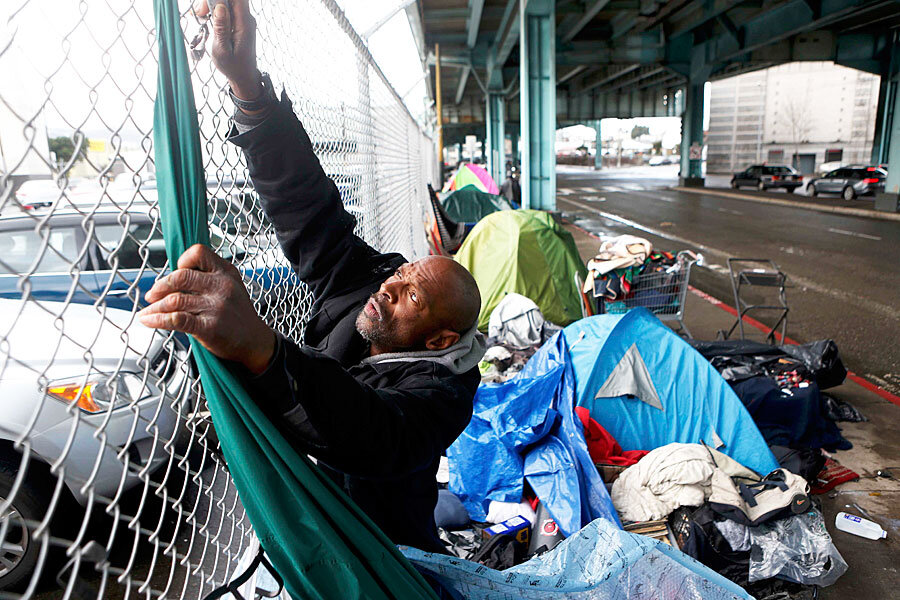The uncomfortable truth in ‘tech bro’s’ viral letter on homelessness
Loading...
As San Francisco continues to struggle with its ever present homelessness problem, one man has taken it upon himself to emphasize the extent of the crisis.
Complaining that the “the pain, struggle, and despair of homeless people” are all but too visible for working professionals like himself, software developer Justin Keller has drawn immense criticism for his open letter of grievances.
He wrote, for instance, about an uncomfortable situation in which a homeless man disrupted his date at a movie theater. Critics have pounced on his use of capitalism as a justification for his annoyance with the less fortunate.
“I know people are frustrated about gentrification happening in the city, but the reality is, we live in a free market society,” he wrote in a blog post Monday, addressing Mayor Ed Lee and police chief Greg Surh. “The wealthy working people have earned their right to live in the city. They went out, got an education, work hard, and earned it. I shouldn’t have to worry about being accosted."
As numerous commentators have highlighted, the massive influx of tech workers – Mr. Keller says in his letter that he moved to San Francisco recently himself – have helped to turn San Francisco into one of the most expensive cities in the United States.
But however tone deaf, Keller does raise a couple valid points, specifically that homelessness has reached the level of a crisis level in San Francisco and residents and elected officials need to work together to find solutions.
“Money and political pressure can make change,” he said. “So it is time to start making progress, or we as citizens will make a change in leadership and elect new officials who can.”
Since the tech sector exploded far beyond its enclave in Silicon Valley and began to set up camp in the heart of San Francisco, gentrification and skyrocketing rent prices have driven many of the city’s low-income natives from their homes. And for that, they blame the tech workers, and Keller is only the latest to exacerbate the antagonism (in 2013, startup founder Peter Shih elicited mass outrage against a personal essay decrying homelessness).
“As a SF native, please know ... you and your tech ‘friends’ have ruined our city beyond repair,” one man tweeted to Keller.
Even those in his field have expressed disapproval.
“Bro, when you write famously idiotic comments on homelessness, you justify the vilification of tech in [San Francisco],” tweeted a tech entrepreneur.
Keller nonetheless brought up a question that few of his critics have acknowledged: Why is it that homelessness in San Francisco, which has been a publicly lamented issue since the 1980s, continues to rise so steeply?
Second to only New York City, the Bay Area city has the highest density of homeless people: 149 per square mile. But unlike New York, it has fewer shelters that keep people off the streets. San Francisco is also home to more chronically homeless people and those who have mental illnesses, as Fusion’s Kashmir Hill reports. It doesn’t help that the city’s poorest neighborhood is literally right next door to its commercial center.
But there have been proven solutions to the problem.
While Keller’s manifesto doesn’t provide any productive suggestions to combat homelessness, he got one thing right: Individuals and elected leaders can feasibly work together towards progress.
San Francisco’s 2016 budget, for instance, already devotes nearly $6 million to neighborhood development and housing units for the homeless. As Ms. Hill notes, the proposed emergency shelter plan will house over 2,000, though that’s only a third of the city’s homeless population. And there has been proven success in eradicating homelessness, she writes:
The only state that has dramatically solved its homeless problem is Utah. It did so by giving homeless people homes and providing them with counseling. Utah focused on its chronically homeless, cutting the size of that population by 91 percent over a decade. According to state officials, the solution has saved the state millions of dollars. It’s cheaper to give someone an apartment than to deal with the costs incurred from their living on the street, with police encounters, jail time, and emergency room visits.








